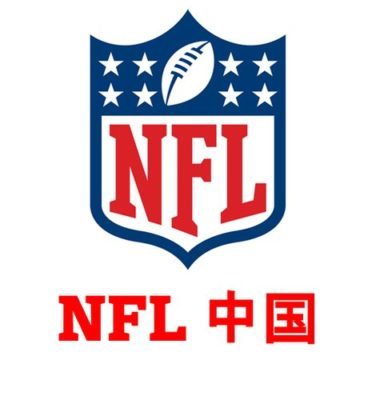NFL Wants Piece of the Action in World’s Largest Market

When Ed Wang was a child, doctors predicted he would grow to be big and strong. He would, they projected, perhaps stretch to as tall as 6-feet-5, maybe 6’-6”. Armed with that knowledge, his parents, both former Olympic athletes, knew their son had a decision to make. Basketball or football?
Wang chose football. He went on to play offensive tackle at Virginia Tech, and in 2010, Wang became the first player of full Chinese ancestry to be selected in the NFL draft when the Buffalo Bills chose him in the fifth round.
Had Wang grown up in China, rather than Virginia, would he have even considered American football? Now 28 years old, with his full potential realized at 6-5, 315 pounds, Wang is fairly certain he never would have played football if he’d been living on the other side of the world.
In the mid-90s, American football was practically nonexistent in his parents’ home country.
“Nobody really knew anything about the sport,” Wang said. “I probably would have done track and field because both my parents did that in China. Back then, basketball wasn’t a popular sport yet, either. I don’t think football would have been anywhere on the radar.”
Now, he is working to change that. Wang has helped to establish the China American Football League, an arena league that started up this past fall. Six collegiate teams formed by the CAFL competed in a tournament in October 2014, and Wang, the league’s vice president of league development, called it a “huge success.”
Meanwhile, the NFL, the granddaddy of American football, plods along with its own plan to raise visibility and popularity of the sport. It wants to capture a slice of the 1.4 billion population, to find a way to make the world’s largest market see the appeal of America’s most popular game.
As it stands now, the NFL has a long, long way to go. By its own estimates, only about 1 million Chinese consider themselves “avid fans” of the NFL. By comparison, 28 percent of the U.S. population (or 89 million people) have been classified as avid NFL fans by Scarborough Sports Marketing.
“As of now, football is still in its infant stages in China,” Wang said via email from China. “We are steadily increasing the knowledge of the game and gaining good momentum. In my opinion, any kind of exposure of the game is good for our cause and in the right direction to where we want to go.”
Where to go from here, though? What are realistic goals for American football in general, and the NFL in particular, in the world’s largest country? Can the NFL truly raise its total fan base from 14.1 million casual fans now to 42 million casual fans in 2022, as its own forecasting predicts? It’s entirely possible that China, in effect, becomes simply the world’s largest NFL jersey seller rather than a true destination for playing the game. And that might be OK.
“Even modest inroads in China are important for the league over time,” said David M. Carter, executive director of the USC Marshall Sports Business Institute. “With an ambitious goal of growing NFL revenue connected to media and marketing dollars, as well as technology and global enterprise, Commissioner [Roger] Goodell must strive to further unlock foreign markets, even if the league never plays a game there. The NFL need not worry about becoming a top sport in China, but rather focus on building its brand over time. Done correctly, the overall global brand value of the league will grow, and this will be beneficial to all its funding partners, as well as its franchise owners.”
The potential of the ripple effect of success is what led the NFL to open an office in China in 2007, and Richard Young, the managing director of NFL China, maintains modest — if not vague — objectives. The NFL does hope to be a Top 10 sport in China by 2020, bumping out more popular Olympic sports to gain a foothold in the sports entertainment world. But goals beyond that? The NFL is very much in a wait-and-see mode.
“The final, ultimate goal is to have a fan base that is both avid enough and large enough to support whatever demands it has,” Young said. “It’s going to be the market that decides that, but the place for us to start is growing that fan base. That’s the process we’re in here.”
To that end, the NFL has been working to build the sport’s support from the bottom up. The NFL China University Flag Football League completed its sixth season in 2014, with 36 teams totaling 1,200 players participating. The league held University Bowl VI, and 179,000 viewers tuned in for the broadcast, but more than 86 million were reached through combined media efforts.
The NFL’s grassroots awareness project included an “NFL on Tour” truck that traveled to nine cities, with 19 separate stops over three months to help raise exposure for the sport. And in the second year of “NFL Home Field,” 28 events were held in three cities over 10 weekends. The events included football games (youth, adult, tackle, flag), skills challenges, “game-day atmosphere” (tailgates, food, cheerleaders, marching bands), community clinics and NFL player appearances.
All of that serves to generate familiarity with and an affinity for American football. Attendance wasn’t eye-popping — 110,000 went to the 28 Home Field events — but the NFL estimates it had a media reach of 500 million when factoring in various forms of social media.
Modest goals for the NFL are a result of realizing the challenges it faces in China. American football is not an Olympic sport — which are most popular in China (i.e. table tennis and badminton). It is not an easy sport to simply pick up and play, and it is not a sport you can play alone.
And it is not an easy sport to follow from across the globe. Monday Night Football becomes Tuesday Morning Football in China — not exactly the optimum time for buddies to gather to watch the week’s big game. But Young believes its international appeal, its complexity and its team-centered approach are what will draw fans to the game.
“I compare it to when people started drinking red wine in the States in the ‘70s,” Young said. “They were kind of snobby about it. It was kind of like, ‘I know something you don’t. I know something that has depth and complexity, and you don’t.’ Just as the watch or clothes or car or the music you listen to defines yourself, your entertainment choice in sport also defines you.”
The NFL is learning from the success of the NBA in China over the last 20 years, and is watching closely as the CAFL started up this past year (with ESPN analyst Ron Jaworski and former coach Dick Vermeil serving as active partners in the CAFL’s foundation).
“The path we’re taking is we realize this is going to be a long-term endeavor,” Young said. “We’re not going to be an overnight sensation. Nor are we going to disappear quickly. We’re not going to be a new sport that comes out as a fad and then goes away. We’ve been steadily growing, as a Chinese saying goes, ‘by crossing the river by feeling the stones.’ We make sure every year is better than the last one.”
That’s why there currently are no active plans to play an NFL game in China, and certainly not to start a league there, yet. The NFL — and CAFL — is working to simply build the passion for American football, first. But there is a long road ahead.
“I think it is starting to change, but for the most part it is still the same,” Wang said. “People here are aware of football now, and some people follow it, too. But the problem is that there is no future professionally for kids who pursue it, so most parents are not willing to let young kids do so. So, with the establishment of the CAFL, I believe this will open to doors for the younger generation who wish to play more.”
And maybe the most popular sport in the U.S. will become more than an afterthought in China. Or, maybe it will simply be the world’s largest NFL outlet store. The NFL isn’t sure yet, but either goal might be enough.
Source and link to original article: movesmagazine.com


